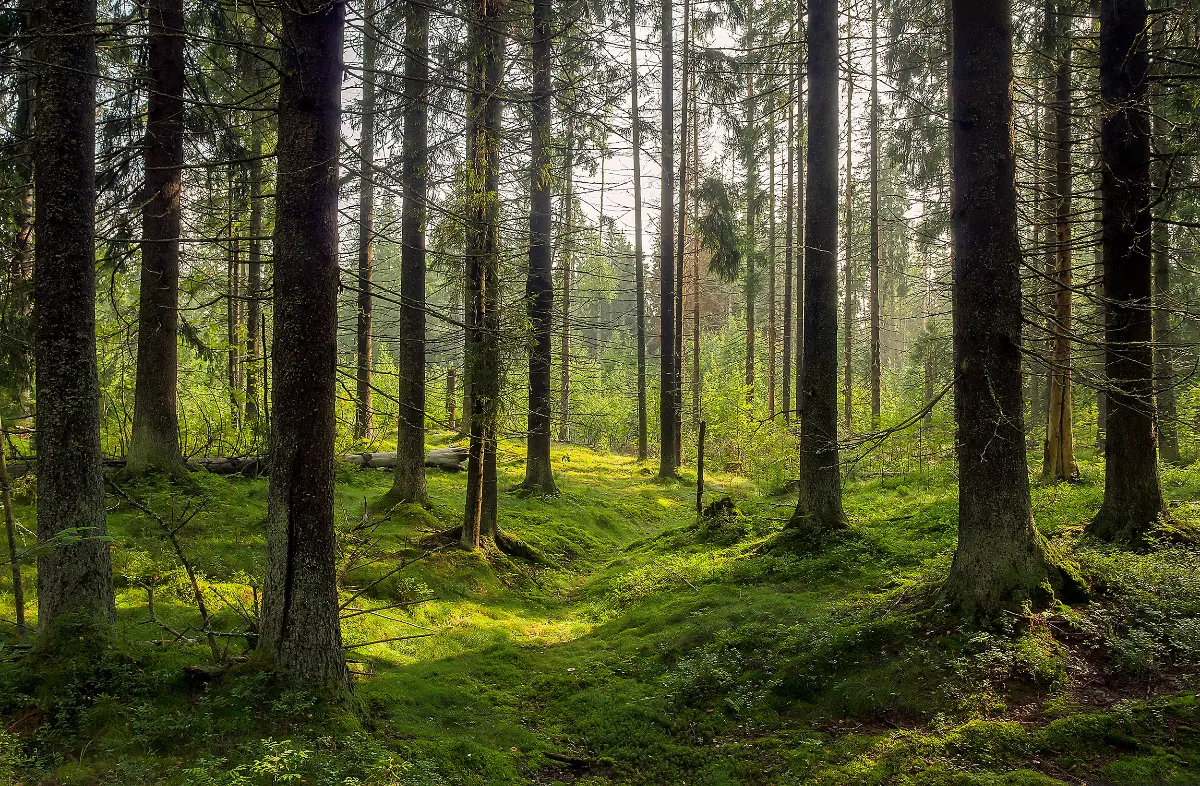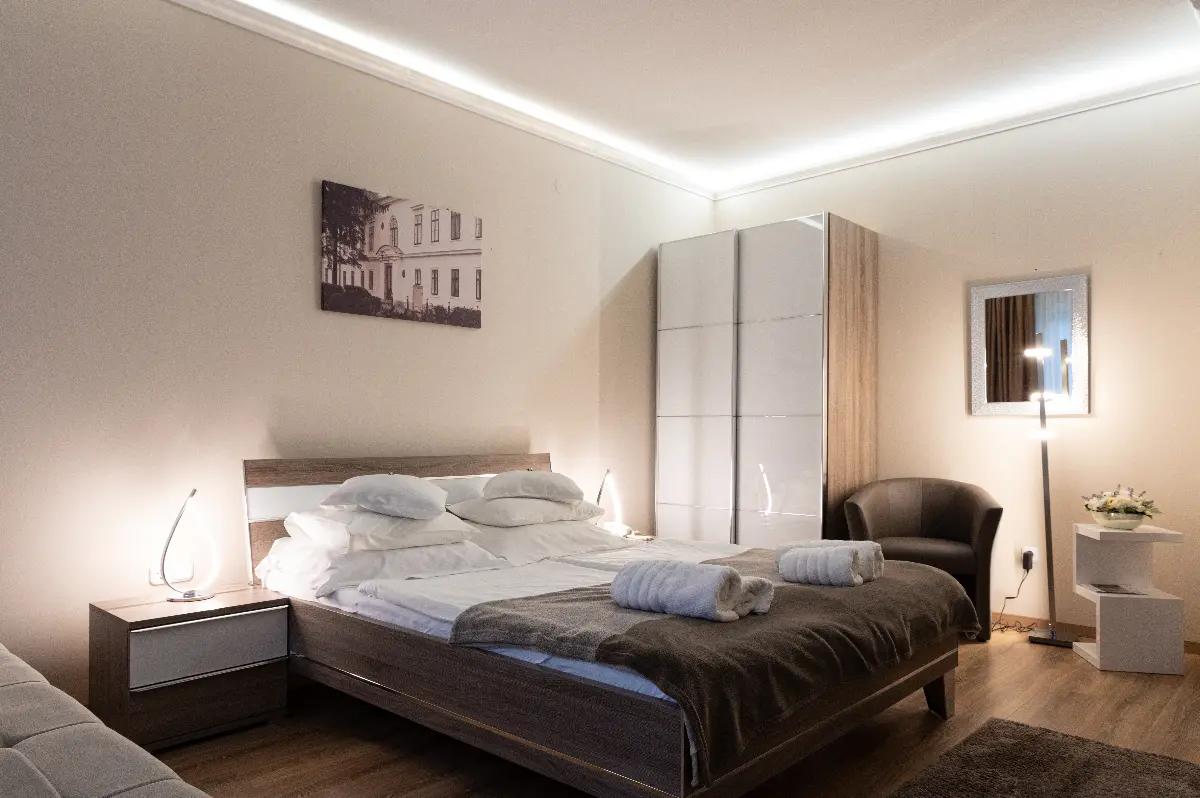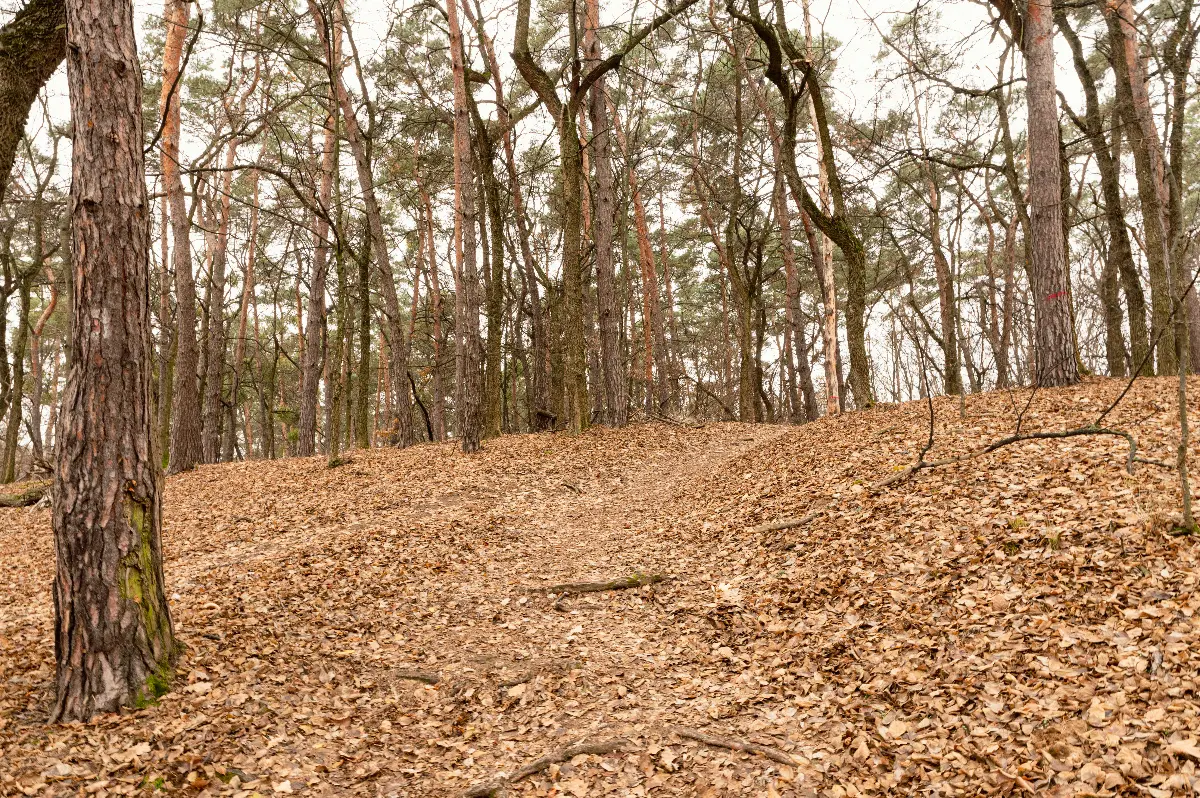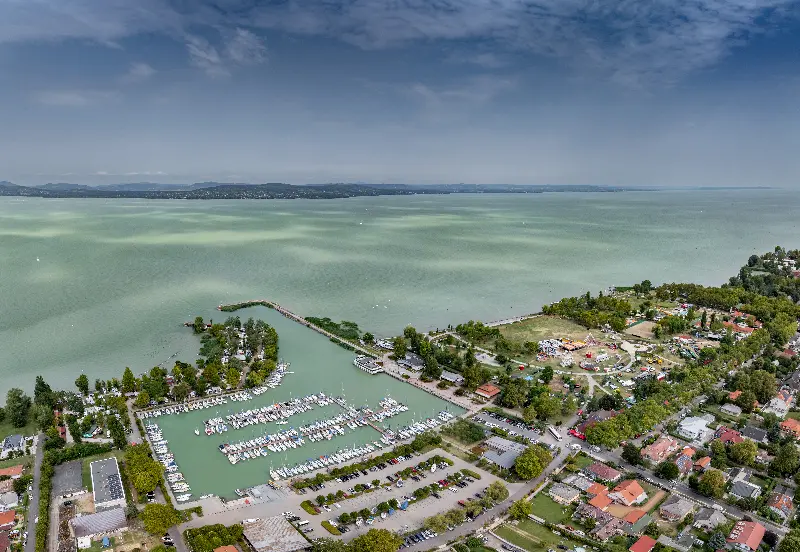
Helyszín címkék:
The secrets of the pine forest
Méhész Zsuzsa
Tradition and innovation
Located 260 kilometres from Budapest, halfway between Nyíregyháza and the border with Beregsurány, near Baktalórántháza, the Fenyves Hotel and Restaurant can be found. The name of the town of almost four thousand people would be a great tongue twister after a few glasses of Hungarian pálinka, which the locals happily offer to all their guests. The wide horizon is divided for a while by a neat row of apple and plum trees: This is one of Hungary's richest fruit-producing regions: there will be plenty to distil in the copper smelters of the area. Then, on both sides of Highway 41, the lowland landscape changes to a mountainous one of hornbeam, oak and pine forests: worth giving up the monotony of the motorway for. The view is magnificent, with the trees almost folding together overhead. Before you reach the crossroads of Baktalórántháza, a town famous for its castle, you will see the Fenyves building, which has been expanding and changing for almost sixty years. Although it has changed hands several times, it has been continuously operating ever since. Over the six decades, it has become the favourite place not only for visitors from the area and those passing through, but there are also regular visitors coming from further places. There are thosewho are seeking the bean goulash being part of the menu since the beginning and those who want to try the latest gastronomic trends. At Fenyves, tradition and innovation coexist peacefully.
Family heritage

The host, András Krivács and his wife Andrea are waiting for us. András, who is the director of the hotel and restaurant and president of the Hungarian Gastronomic National Association, originally intended to be a forester, but his destiny was determined by the family business and his grandmother, the chef. The modest “Fenyves Csárda” (Fenyves Tavern), built in 1963, was one of the most popular places in the area in the 1980s. In 1998, the parents took it over and the restaurant became a guesthouse. Ten years later, with the nextgeneration involved, they became a four-star hotel, and in 2020 another transformation and quality change followed. Meanwhile, András was not only been voted the head of the largest hospitality organisation in Hungary by the industry, but he also joined the elite club of the 50 most influential people in tourism in Hungary, where almost everyone could be connected to the capital. He was quite surprised at the time, coming to the world of tourism and hospitality from the eastern borderland like the youngest boy in folk tales, who stands out for his insight and directness. His commission entailed a lot of travelling and professional consultation, but it seems that he took the good practices home and incorporated them into everyday life. Everyone in the county has known about Fenyves for some time, but now it is also on the bucket list of those from further afield as an 'if-we-are-going-there-we-must-see-it' item.
Iconic food
There is a reason why bean goulash was mentioned. It is not usually the kind of food that makes you want to get in the car and drive hours to a country restaurant to try it. The menu at Fenyves is modern and follows thetrends of the 21st century, but this dish has been on the menu since the restaurant opened. They still have the original recipe, adapted as much as time required. The menu is not, but the kitchen at Fenyves is experimental. While the food constantly reflects the rural man's good relationship with gastronomy, the cuisine follows the trends. As soon as a novelty or a new technology appear, they buy and try it. That is how the traditional bacon is topped with mashed kohlrabi, and how the cottage cheese pancakes are made just as thick as the grandmother of the chef once created them; but on the plate, they are served in a way that grandma never would have done so. It is very important for the Krivács family to buy what they can from local producers in the area. They also have their own farm: they use fruit and vegetables produced there and make their own jam and dried fruit. “When they are cooking ratatouille in the kitchen and I walk in, I can immediately feel that it is being made from our peppers and tomatoes. It has a different smell. As well as a different taste,” he explains. He believesin the uniqueness of the region and knows its gastronomic traditions inside out, which he incorporates into their everyday lives. Somehow the normality and avoidance of exaggerations are the most characteristics of the place. It is obvious that they want to please the guest, but they do it in their own way, never giving up their mission: to represent and preserve the culinary heritage of the region.

Slow down
We could also mention renewal, the transformative and selective role of the Covid era in hospitality, the relationship between tradition and modern expectations, but that is not the secret of the pine forest and the Fenyves. There are no chronometric instruments in the restaurant or hotel rooms, except for a world clock. Time is measured in other things around here, not in minutes. If you slow down in the Baktai Forest by your car, your will also slow down mentally. It is like arriving on an island of peace in the world, where nothing exists but the forest, the evergreen trees, personal attention and your own personal space. It is like an island, even if the illusion is split by Highway 41.
The cuisine of Szabolcs-Szatmár-Bereg
The eastern end of Hungary has an exceptional gastronomic tradition. There are not only typical dishes of Nyírség, Szatmár and Bereg that cannot be tasted elsewhere, but also ingredients, methods and characteristics that make regional gastronomy distinctive. Church traditions and rituals, which are still alive today, play an important preserving role. There is no Easter around here is without Hungarian Easter Cheese, and no family celebration is complete without a stuffed cabbage of Szabolcs. According to András Krivács, the emergence of a distinctive, unmistakable regional cuisine is due to the tri-border area, the many cultural influences and diversity. In my opinion, its survival was due to the favourable local conditions, its isolation and the traditional way of life, which is still present today, though becoming extremely rare. We are probablyboth right...















